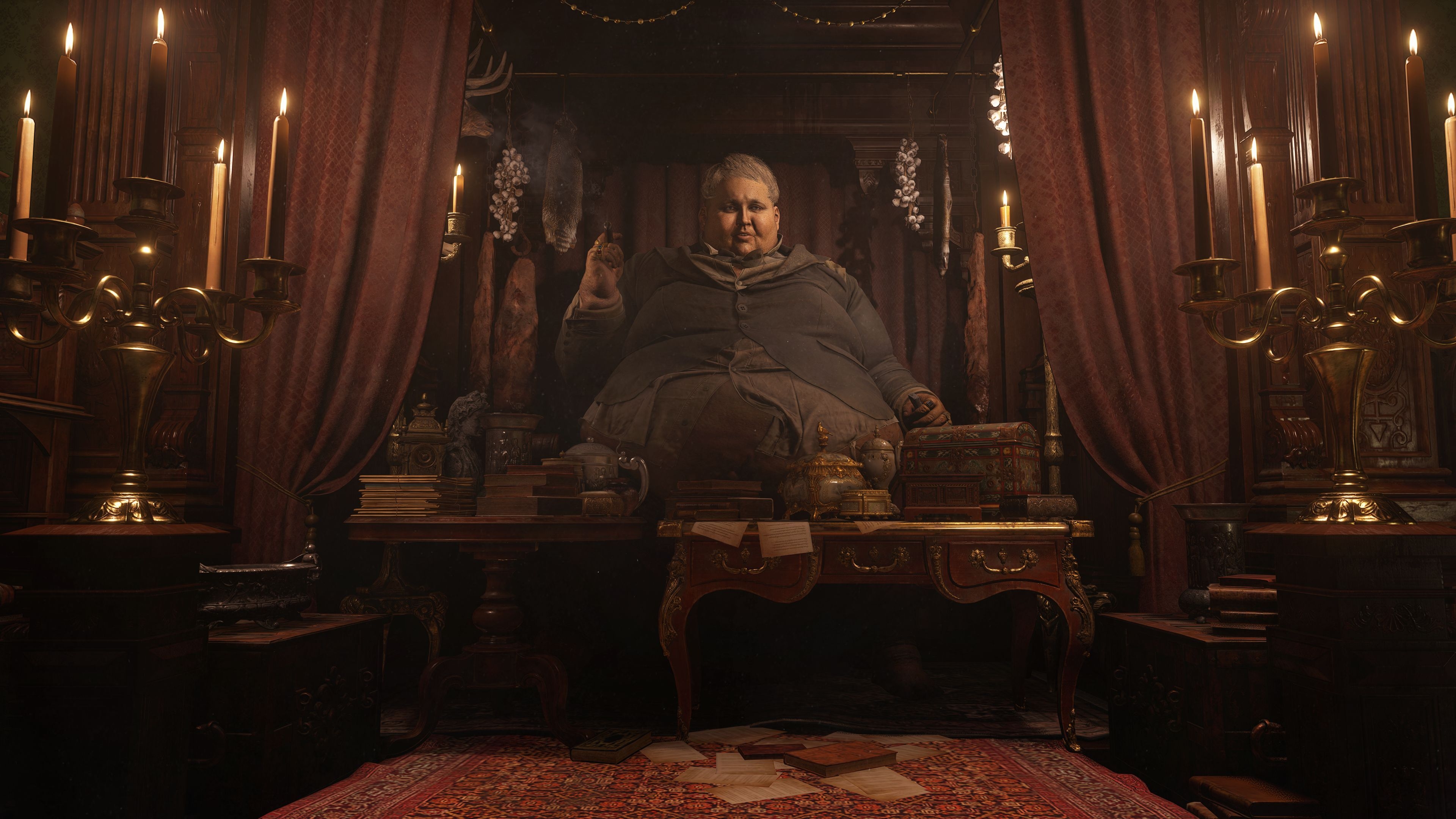Resident Evil Village came out today, after months of demos, hype, and extremely horny internet obsessiveness; as my colleague, A.A. Dowd,
wrote in his largely positive review, it’s kind of a kitchen sink of horror video game tropes. Simultaneously channeling
Resident Evil 7,
Resident Evil 4,
Amnesia,
P.T., and a few other spooky gaming mainstays,
Village operates (and operates quite well, I should be clear) on a “Screw it, throw it in” set of design principles, comfortable slapping down one of the most effective haunted house sequences in recent memory right in between fights with the Large Vampire Woman and a guy who’s basically Magneto doing a bad Nic Cage impression. In some ways, it’s a dedicated attempt to be all
RE games to all people: Want to play
Village as an action-powered arcade minigame (complete with a return of the venerable
Mercenaries mode, shockingly well-adapted to the game’s first-person combat)? It’s there. Want to treat the entire game as a treasure-hunting scavenger hunt? Knock yourself out. Fishing? Dear reader, of
course there’s fishing in this
Resident Evil game.
Nowhere is this approach more charming—for a value of charming that includes a tabletop game that also doubles as a grave, leastways—than in the four Labyrinths that dot each of the game’s major sections. And that’s Labyrinth in the “weird marble-based board game your uncle probably had in the ’80s” sense; hidden in each of the game’s major levels is a big, bulky contraption designed to test your ability to play Marble Madness in the Gothic tradition, navigating a specially crafted ball through a series of baroque landscapes. Your reward for completing the courses? The jeweled corpse of one of the creator’s four wives (no, really), which you’ll then turn around and sell back off to enigmatic merchant The Duke in exchange for another desperately sought gun upgrade. The whole thing is ridiculous, dumb, goofy, excessive, and oddly, compulsively joyful; a whole lot, in fact, like Resident Evil Village itself.
Maybe I’m just a sucker for cool contraptions, though; Norshteyn, the artist who crafted these awful/wonderful objects in-universe, appears to have been a firm believer in the Resident Evil school of convoluted, Rube-Goldberg-esque industrial design. (The only other thing we’re ever told about him, meanwhile, is that he apparently sucked majorly at keeping wives alive, given that there’s four of these damn things dotting the landscape.) There’s a beautiful physicality to the Labyrinths, a sense that they could exist in the real world if the real world wasn’t so deprived of insane, obsessive European toymakers. And part of what makes them so wonderful is how clearly superfluous they are. Finding each one (and the corresponding ball) in each level is a special treat, often a reward for surviving a grueling combat sequence or long series of scares. But it’s also completely optional—to the point that, if you’d excised them from the game’s development entirely, we can’t imagine a single player noting their absence. (“Sure, I liked Village, but it seems like it went 10 percent too light on ‘corpse-adjacent parlor games.’”) At every step, it feels like someone said, “Hey, this is cool,” and then just kept saying it, all the way to the finished product. And lo, it was, indeed cool.
Now: Is it silly to have a man desperate to save his missing daughter in a hostile countryside stop down for a little medieval pachinko from time to time? Absolutely. But Village grasps that “silly” and “scary” don’t have to be mutually exclusive; it’s the kind of game where a gorgeous toy castle with a dead wife buried inside it can be a bonus, or afterthought, without spoiling the deranged strangeness of the entire package.


 Keep scrolling for more great stories from The A.V. Club.
Keep scrolling for more great stories from The A.V. Club.